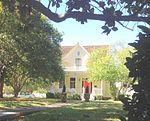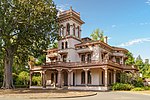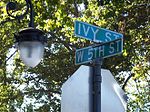Hooker Oak
1970s individual tree deaths1977 disestablishments in CaliforniaCalifornia Historical LandmarksChico, CaliforniaHistory of Butte County, California ... and 3 more
Individual oak treesIndividual trees in CaliforniaNatural history of Butte County, California

Hooker Oak was an extremely large valley oak tree (Quercus lobata) in Chico, California. Amateur botanist and local socialite Annie Bidwell, whose husband had founded Chico, named the tree in 1887 after English botanist and Director of the Royal Botanical Gardens Sir Joseph Dalton Hooker. It was featured in the 1938 film The Adventures of Robin Hood starring Errol Flynn. The tree fell in 1977, and portions of it were later milled for use by local artisans.
Excerpt from the Wikipedia article Hooker Oak (License: CC BY-SA 3.0, Authors, Images).Hooker Oak
Peterson Memorial Way, Chico
Geographical coordinates (GPS) Address Nearby Places Show on map
Geographical coordinates (GPS)
| Latitude | Longitude |
|---|---|
| N 39.738333 ° | E -121.825278 ° |
Address
Peterson Memorial Way
Peterson Memorial Way
95928 Chico
California, United States
Open on Google Maps









